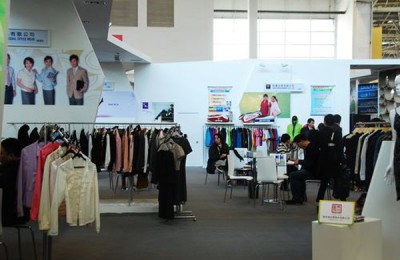Finishing
Textile finishing is also called post-finishing. It uses physical, chemical or physical and chemical methods to improve the feel and appearance of fabrics (such as stiff finishing, soft finishing, calendering or raising, etc.), improve the quality of fabrics, and give new functions to fabrics (such as anti-wrinkle, waterproof, anti-fouling) , anti-corrosion, anti-mildew, anti-moth and anti-bacteria, etc.) processing process.
In the broad sense: all the processes to improve and improve the quality after being loomed
In the narrow sense: the fabric is scouring, bleaching, The unexpected process of dyeing and printing is called fabric finishing
Post-finishing classification
1 According to the technical characteristics of the finishing process, it can It is divided into mechanical and physical finishing, chemical finishing and physical-chemical finishing (comprehensive finishing).
2 According to the durability of the fabric finishing effect during subsequent washing and use, it can be divided into temporary finishing, durable finishing and semi-durable finishing.
1. Physical method
Use water, heat and mechanical effects such as pressure and tension. Or during finishing, the fiber does not undergo chemical changes with the chemical raw materials used, and the finishing effect is obtained. Such as mechanical soft finishing/appearance finishing and styling.
2. Chemical method
Use certain chemicals or polymer synthetic resins to infuse fibers into A chemical reaction occurs on the surface to achieve the purpose of finishing. Such as stiff, anti-shrinkage, anti-wrinkle, water-repellent, and flame retardant.
3. Physical-chemical finishing
Such as durability calendering, electropolishing, embossing, Shrinking
4. Temporary finishing
The finishing effect will disappear after washing. Such as sizing, calendering, electro-optical finishing, etc.
5. Durability finishing
Such as shrink-proof and anti-shrinkage Wrinkle finishing
Purpose of post-finishing
01 To stabilize the size and shape of the fabric
Through finishing, the door width is stabilized and the shrinkage rate is reduced, so that the fabric width is uniform and the fabric size and structure conform to the prescribed standards.
For example
Tenter – taking advantage of the certain plasticity of cellulose, silk, wool and other fibers under humid conditions, The finishing process of gradually widening the width of the fabric to a specified size and drying it to stabilize it is also called setting.
Heat setting – refers to a processing technology in which synthetic fiber fabrics are heat treated under a certain tension to stabilize their size and shape.
02 Improve the appearance of clothing fabrics
Improve fabric whiteness and drape, improve fabric surface gloss and give fabric surface pattern effect, etc.
For example
Calendering finishing – through the mechanical pressure of the calender and the action of moist heat , with the help of the plasticity of fibers, the surface fibers are arranged in parallel to improve the smoothness and flatness of the surface, produce regular reflection of light, and thereby improve the color of the fabric.
Corrugation finishing – the embossing finishing machine uses a heatable hard roller and a Composed only of soft rollers. The surface of the hard roller is engraved with a positive pattern, while the soft roller is engraved with a negative pattern, and the two match each other. During finishing, the plasticity of the fabric under hot and humid conditions is used, and the fabric is pressed using Yin and Yang rollers to produce a concave and convex pattern effect on the fabric.
Sanding – After finishing, the fabric can produce a suede surface, which improves the feel and makes it comfortable to wear. It can be done on a brushing machine, and the fabric will produce a suede surface after repeated friction.
03 Improve the feel of clothing fabrics
Gives the fabric a soft and plump feel or a stiff feel.
For example
Softening finishing – is to make up for the stiffness and roughness of the fabric to make the fabric feel soft processing process. Including mechanical soft finishing, chemical soft finishing and stiff finishing.
Mechanical softening mainly uses mechanical methods to flex the fabric multiple times under tension to reduce the rigidity of the fabric and restore it to the appropriate softness.
The chemical method uses the action of softeners to reduce the friction coefficient between fibers to obtain a soft effect.
Stiff finishing – is to give the fabric a smooth, stiff, thick and plump feel, improve strength and wear resistance, and also improve suspension Decoration and appearance.
Stiff finishing processing is generally carried out in combination with fixed width. Softening agents are added to the slurry to improve the overall feel. Similarly, for pure soft finishing, stiffening agents are added to enhance the texture. bone.
04 Give fabrics special properties
Equip fabrics with certain protective properties or improve the wearability of fabrics performance.
For example
Waterproof finishing – coating the fabric so that neither water nor air can pass through it ; Water-repellent finishing is to change the hydrophilicity of the fiber surface into hydrophobicity. The fabric is both breathable and not easily wetted by water.
Flame-retardant finishing – Finished fabrics have varying degrees of ability to prevent the spread of flames , can quickly stop burning after leaving the fire source.
</p







